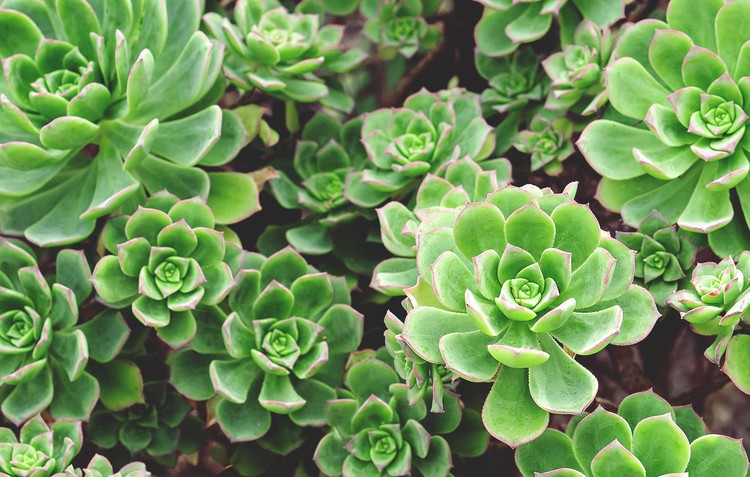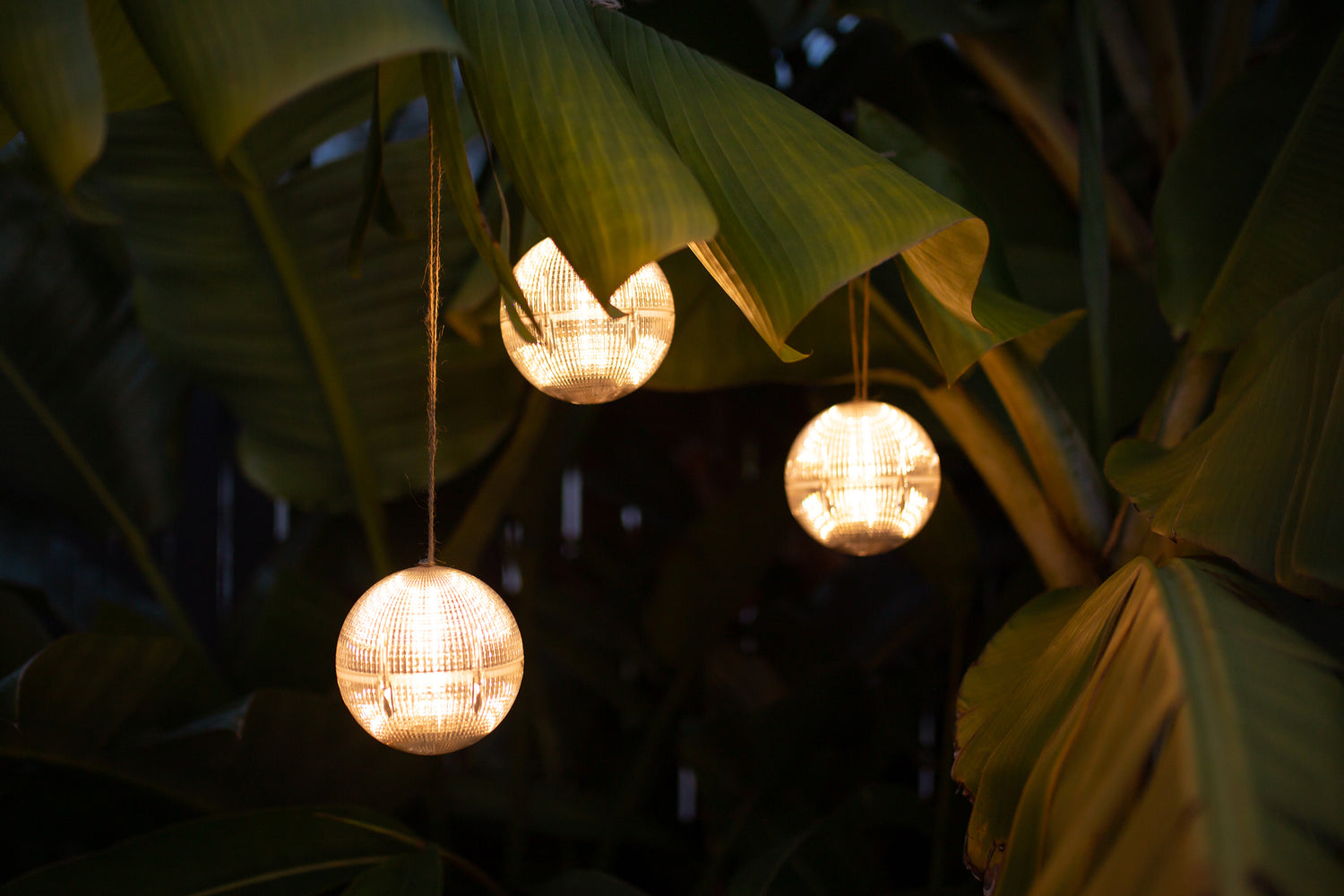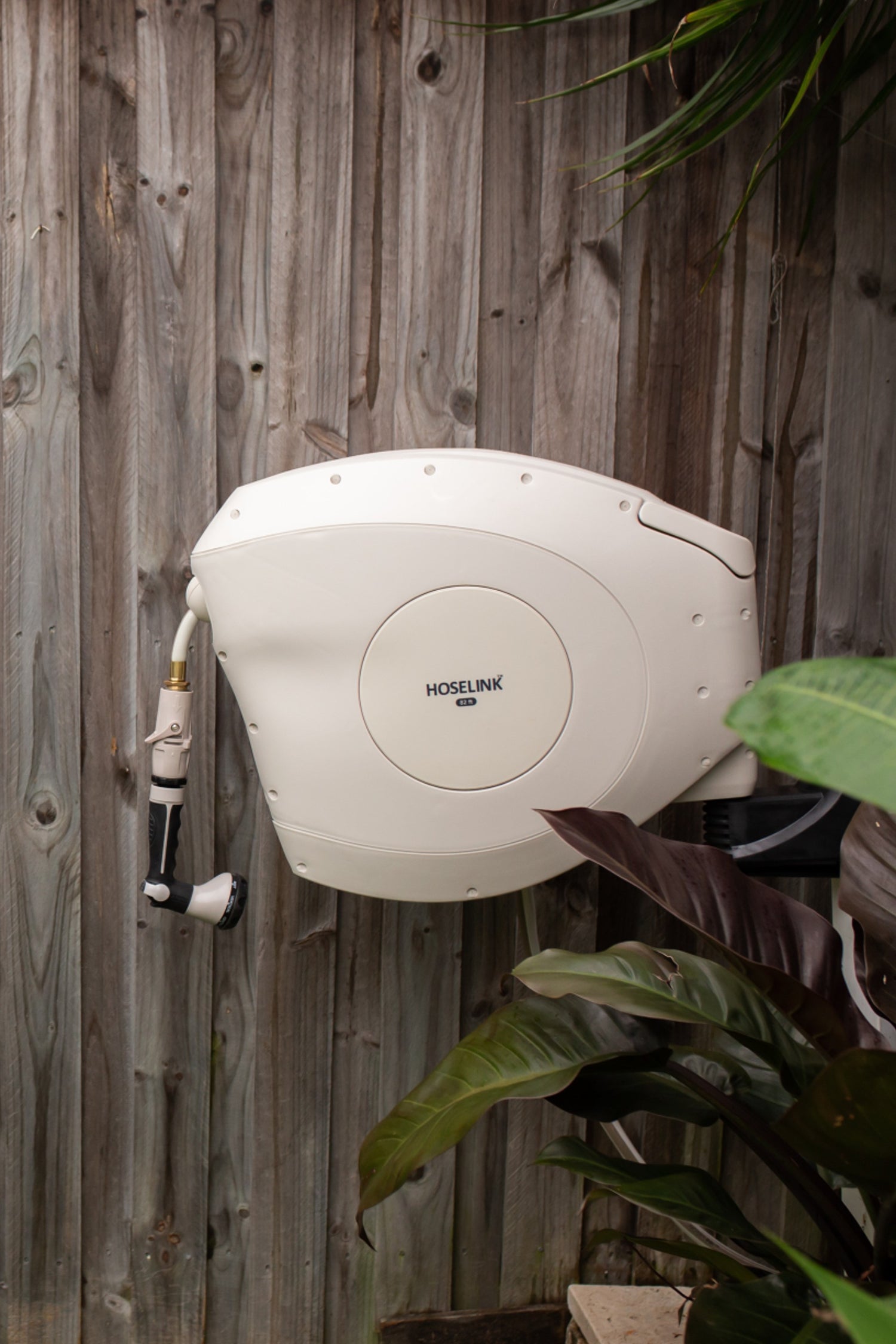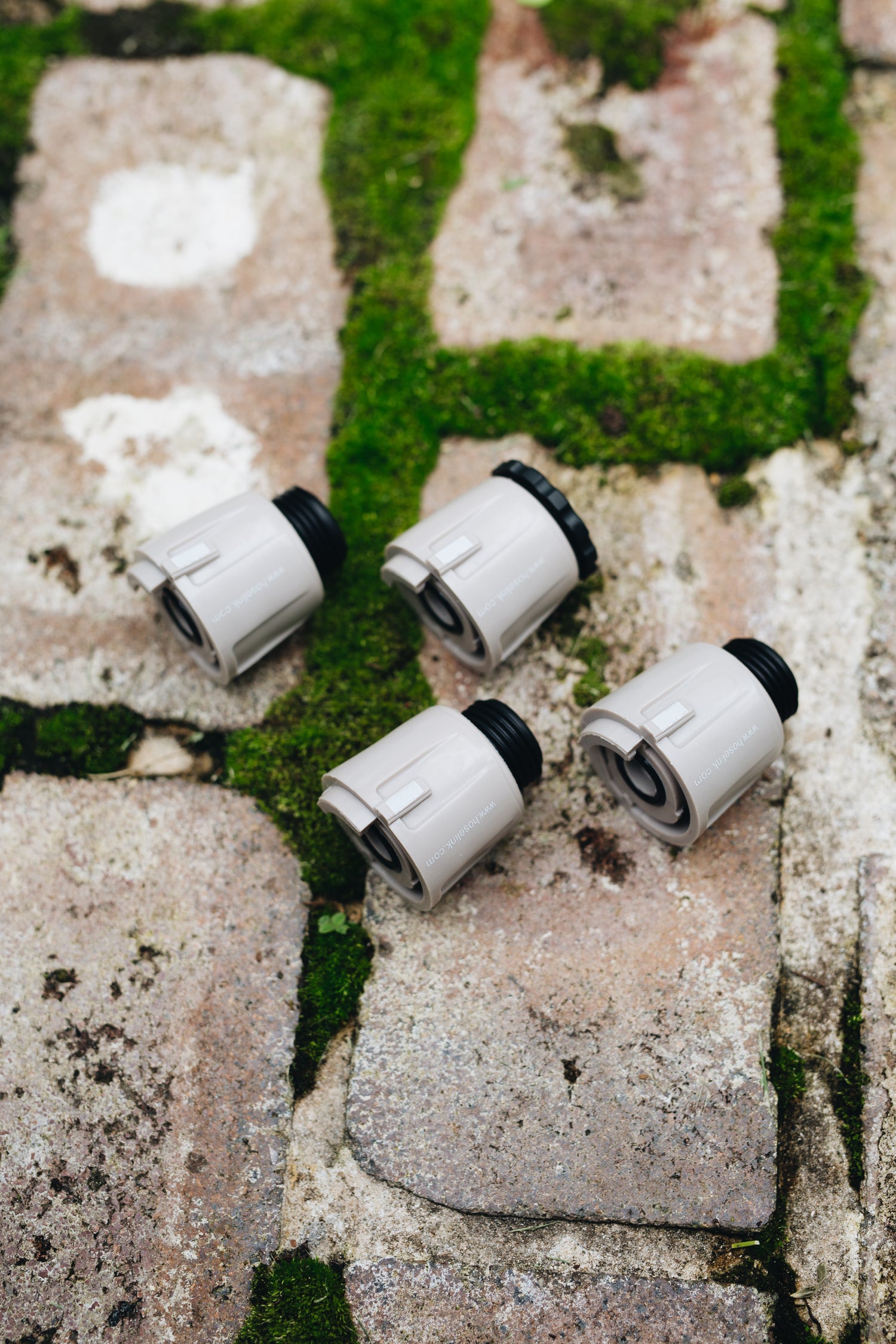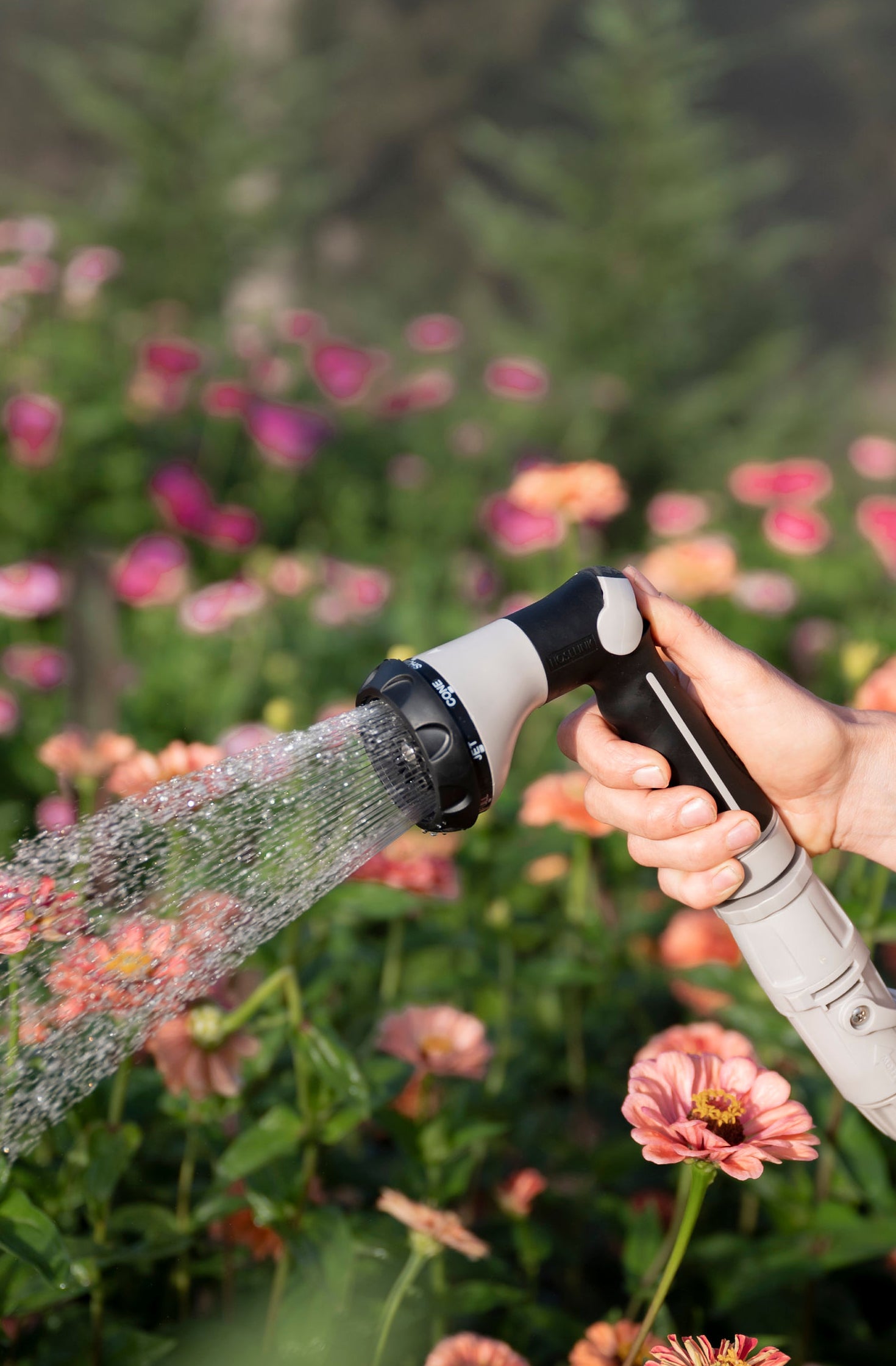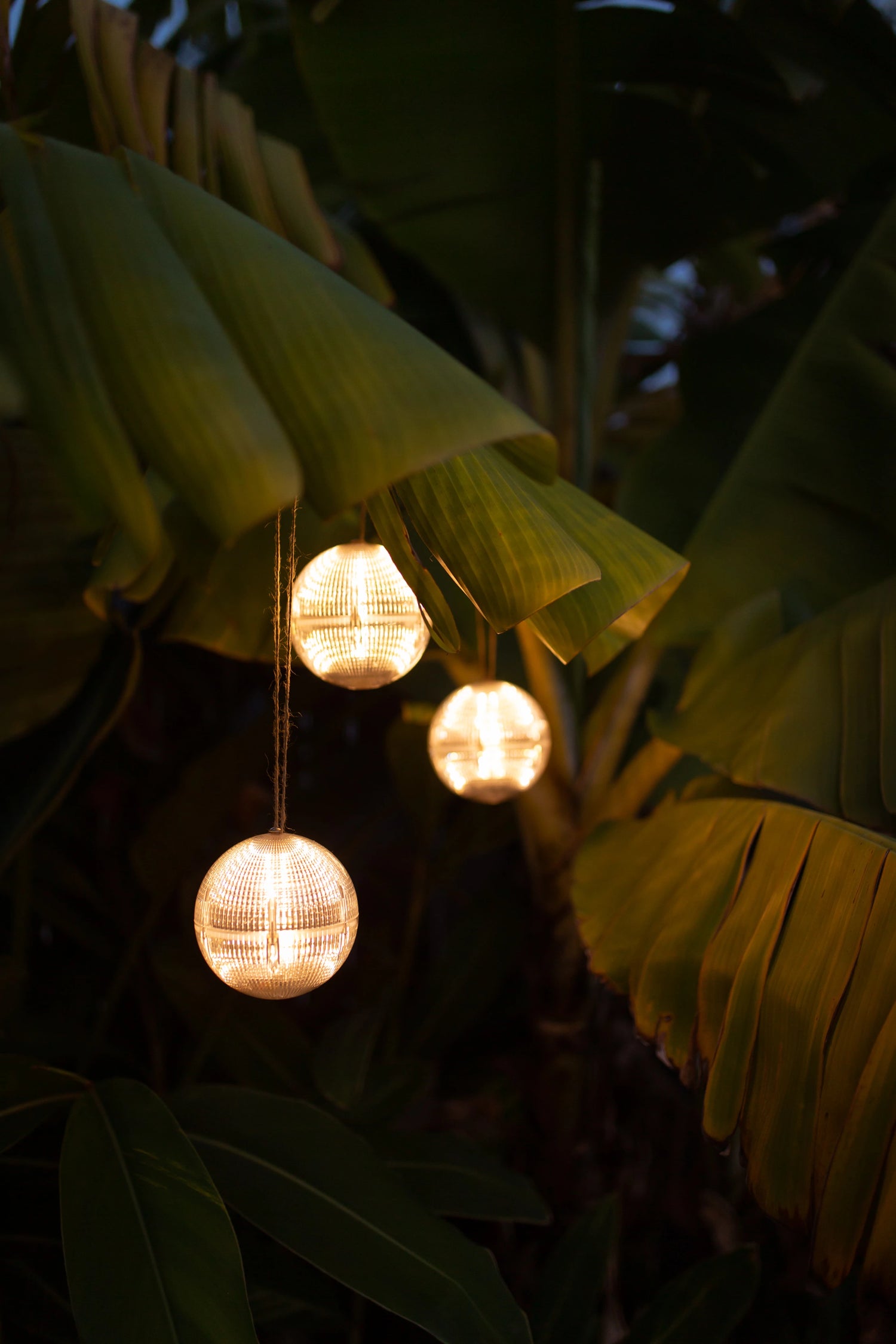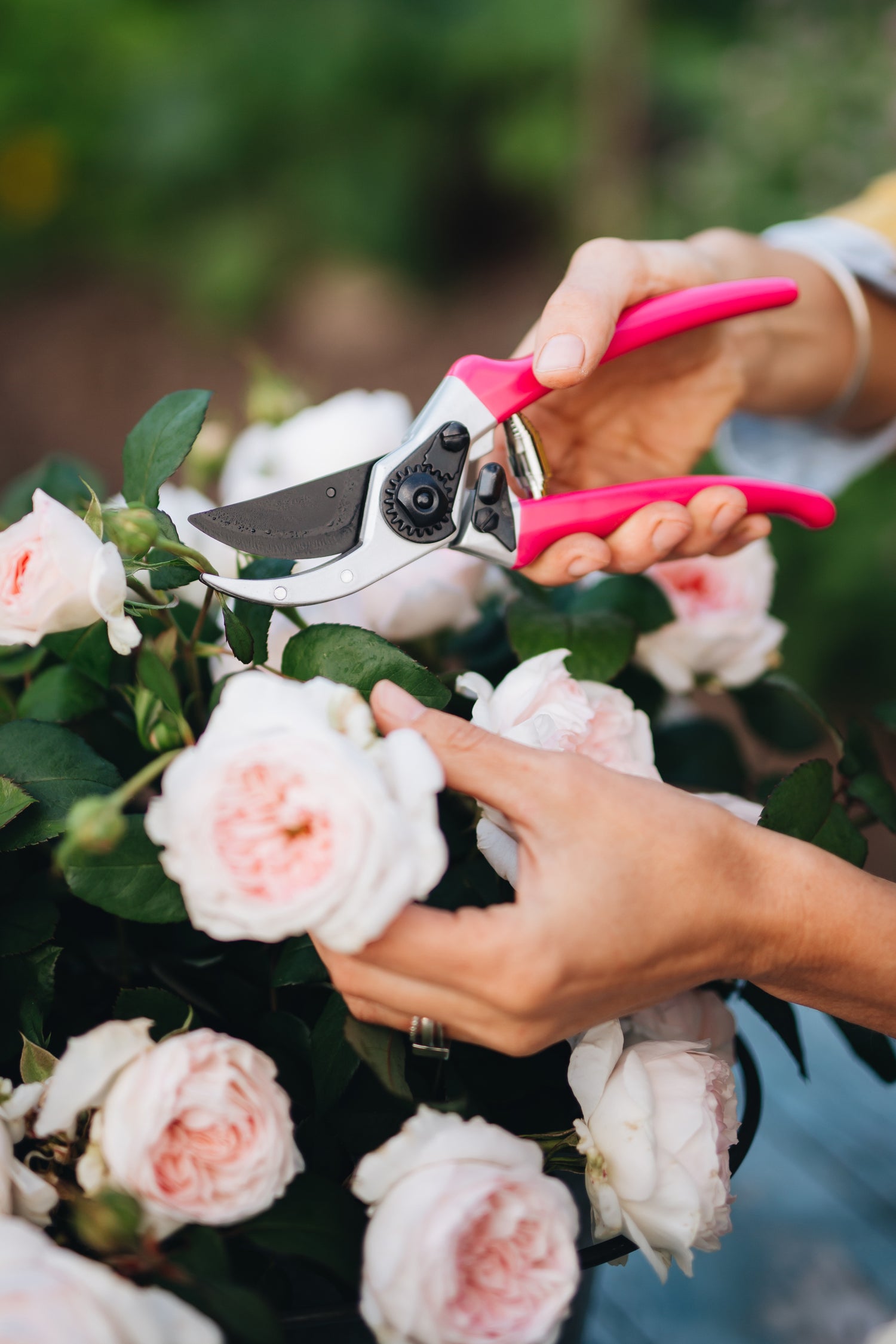Not only are succulents a breeze to look after and merciful to first-time gardeners who may still be learning the ins and outs of being a plant parent, but the best part is you don't need a large garden to experience the joys of growing them. In our beginner's guide, we'll go over all the vital information on succulent plant care and everything you'll need to consider to keep yours healthy and happy.
What is a succulent?
A succulent is a plant variety with an array of forms, colors, and blooms. They're characterized by their thick, robust leaves, but what makes succulents so special is their unique ability to hold water in their leaves and stems. They're incredibly accustomed to more challenging climates where water supply is more inconsistent and unpredictable.
Although most succulents require warmer temperatures, dry, well-drained soil, and adequate levels of sunlight, some can uphold cooler temperatures and even frost damage and still bounce back to full health when warm weather returns. Make sure you understand if your succulent is a tropical or hardy variety when planting outdoors.
In many areas, you'll want to grow your outdoor succulents in pots for portability; this gives you the ability to move them inside to avoid rainfall and accommodate their need for sunlight across the day and seasons.

When to plant succulents
Although succulents can survive in the sun and heat, you'll find they prefer being planted in milder weather. We advise planting in spring or fall or even waiting for a patch of overcast weather. Much of the nurturing process with succulents is dependent upon the temperatures they're exposed to. Although the weather is not in our control, choosing a cooler time to plant and ensuring night-time temperatures are above 45 degrees Fahrenheit within the first couple of weeks after planting are small steps you can take to guarantee a healthy start to your plant's life.
Growing succulents
Soil
Home gardeners are advised to use fast-draining soil to grow their succulents. This is to prevent water from remaining on the shallower roots of these plants for an extended period of time, which is something to be mindful of when buying potted succulents.
The difference to remember between soil for most plants and soil for succulents is that usually, soil that has been properly aerated and well-drained while still retaining moisture is appropriate. But with succulents, you'll want your soil's moisture to dry up quickly, hence we advise choosing a material base that's coarse in texture. Pre-packaged succulent and cactus soil mixes are ideal and should be available at most nurseries or garden centers. However, the internet is filled with recipes, with the majority using a base of regular potting soil with other ingredients like sand, perlite, turface, and even coconut husks. If you choose to make your own mix, ensure you select a base soil and elements without additives.

Watering
There's no job more important than watering your succulents, and it's something we want to make sure you get right! For the experienced gardener, or one who's just starting out, water requirements for succulents are unique and peculiar, requiring a slight change in approach to the rest of your garden. Overwatering is the most common cause of death for succulents!
An important factor to note is that succulents first emerged in dry climates where rainfall is infrequent. After years of evolution, succulent plants still store water in their roots, leaves, and stems as a coping mechanism to extend their lifespan. This indicates why overwatering and moist soil are big no-nos. You'll want to water these plants infrequently, fortnightly, or even monthly during winter, and ensure that they're watered at night, as their respiration occurs between dusk and dawn.
Although we advise watering infrequently, you should still water thoroughly. Deeper and longer watering encourage roots to grow downward, as opposed to reaching upwards for water, which can complicate the growth structure of the succulent as its roots are prone to spreading laterally. Also, make sure you avoid wetting the leaves of your succulents, as they'll fall apart.
Fertilizing
Along with water, soil, and sunlight, feeding time is also a little different for succulents. Again, due to their origin, succulents have grown accustomed to limited feeding, so when feeding succulents at home, we advise you replicate their native conditions and limit fertilizing to once a year. Overfertilizing can weaken succulent plants, as the additional growth beyond their natural level is likely to weaken its body and lead to a process known as etoliation, whereby abnormal lengthening of the stems and leaves may occur along with weakened cell walls, spindly leaves, and the potential development of chlorosis (which affects the green color of the leaves).
What we feed our succulents is as important as the frequency of feeding, particularly if done once a year. There is a range of options for you to consider, with some recommending using a high phosphorous fertilizer, whereas some utilize compost tea, which can also serve as a health tonic. Other gardeners recommend a method known as fertigation, whereby fertilizer is included in the water supply, which is what we recommend.

Pruning
Without the right amount of sunlight, succulents can sprawl out, which is where pruning becomes essential. When pruning your succulents, you'll want a sharp, clean pair of secateurs to get the job done and avoid harming the plant.
Beheading the succulent, which involves cutting off the top part of the plant, not only keeps your succulent looking neat and tidy, but also allows for plant propagation. You'll find that pruning succulents will provide at least one new plant and potentially more depending on how long your stems are and don't worry about losing length off your succulents either, as leaves will grow back over time. The only thing to remember is that the head of your succulent will form a thick layer similar to a scab across its surface, which prevents the piece from retaining too much water in the interim. Before propagating, we encourage you to let this process happen naturally.
Other reasons to prune a succulent include death, which can occur after flowering if it's too overgrown, crowding if there's too much bare space between leaves, and disease control.
Succulents in containers & pots
You'll find that when growing succulents in pots and containers, they'll need extra love and care when it comes to watering. The best choice for gardening with succulents is a pot with several drainage holes that can support the fast-draining soil you use. We advise terracotta or clay pots over glass and ceramic options as they don't hold as much water. As succulent roots tend to deteriorate if they remain moist for an extended period of time, try to grow them in shallower containers that can drain more quickly.
Watering frequency varies from season to season, as no water is needed when plants are inside during winter; however, watering should be conducted weekly when transferred outside in spring. It's essential to provide adequate shade for your succulents come summertime too!

Choose your succulents
When it comes to the weird and whacky, succulents are definitely up for the first prize. Did you know that cacti are also considered to be a type of succulent? They're even one of the more noteworthy varieties, providing outstanding flowers and abstract character to the home. Outside of the most commonly grown succulents, these exotic varieties are guaranteed to turn heads and make for spectacular viewing indoors and out:
Black Aeonium: A dramatic succulent tree, reaching 3ft in height. Its size, dark black leaves, and large yellow flowers create quite the sight!
String of Beads: This exotic succulent is the ideal choice for hanging baskets. Leaving a line of trailing stems with pebble-like beaded leaves and sweet-scented white flowers, these are for the keen decorators!
Living Stone: For those looking for something a little different, this variety is a great choice. Just when you thought you'd settled for a cone-shaped plant, spectacular white blooms come bursting from its center!
Moonstone: Another exciting and somewhat unusual plant is the moonstone. This succulent also resembles stones with its light green to white-colored egg-shaped foliage, which may also be flushed with lavender blue. If that's not enough, the spikes of orange-red flowers are sure to impress.

Caring for succulents in winter
Once you learn what a succulent requires in the colder seasons, you can keep them alive. The key to ensuring their survival is through 'overwintering' soft succulents.
Overwintering
The indoor care for succulents in winter is predominantly about lighting. While winter may be the season of growth for some succulent plants, it can also be a dormant season for others. For those dormant season succulents, little water is required; however, for those that thrive in winter, water, food, and even pruning is necessary for the plant's longevity.
Simply knowing the name of your plant can help you provide adequately for them through research. If you don't remember the exact succulent you have, don't panic, stop feeding them and limit watering as you move them inside in the fall.
Lighting
Sometimes all your plant needs is a sunny south or southwest window to shine enough light inside. If you find your succulent looking a little pale or starting to stretch, it's nature's way of telling you it's hungry for some light!
A common investment for succulents is grow light setups, with some setups already having lights installed into the shelves. In some cases, fluorescent lighting serves well, but the plant must be within a couple of inches of the bulb. Another essential tip when providing adequate care in winter is the amount of light exposure, which should be 14 to 16 hours daily.
The best way to care for your indoor succulents in winter is to locate them in a bright space, similar to the type of lighting they're soaking up outside. While good air circulation is imperative, avoid leaving them near drafts. Before overwintering your succulents indoors, clean up the soil. If you find they're not planted in appropriate, quick-draining soil, have a go at replanting them. Having your plants in immaculate shape before overwintering succulents indoors will help maintain their lifespan, so don't forget to clean up any dead leaves and check for pests.
Some people choose to grow succulents as annual plants and keep them outside, whether they survive or not. You might be surprised by a mild winter and plants that can handle the colder weather. To keep soft succulents alive outside, you need to keep them dry. A fast-draining gritty mix for planting is a requirement. Although, cold-hardy succulents planted in the correct soil can live outside with no issues and flourish again in spring.

Succulents and rainwater: what's the best water for succulents?
Just as you thought you struck gold with an easy-care succulent, you hear that tap water can be detrimental to their survival! Using the wrong kind of water can sometimes create issues that occur when you least expect it.
If you find spots on your plant's leaves or a white build-up on the soil or terracotta container, you might be using the wrong water. Using inappropriate water can turn your soil alkaline, which is not an ideal growing situation. A lot of home growers have unintentionally caused damage to their succulents when watering with tap water. Tap water from a municipal source (city water) can contain chlorine and fluoride, which don't provide any beneficial nutrients for your plant. Occasionally, if you let the water sit for a day or two, it can help improve the quality as it allows time for some of the chemicals to dissipate, but not always.
The ideal water for succulents holds a pH range below 6.5 or right at 6.0 for most succulents, which is acidic. To determine the pH of your water and the products to decrease the pH, you may consider purchasing a testing kit. Sometimes the addition of white vinegar or citric acid crystals can lower the pH. However, you still need to know the pH of your tap water to ensure you're adding the correct amount. You can also try purchasing distilled water, but if these options seem abrasive or too pricey, we have a more natural solution for you! Try collecting rainwater to water succulents, as rain is acidic and helps the succulent roots absorb nutrients. Rain becomes oxygenated as it falls and then passes this oxygen to the succulent root system, all while flushing any accumulated salts from the plant's soil.
Common pest problems
One of the many amazing things about a succulent is the lack of pests they attract, but in saying that, pests may still attack. You must know what your succulent should look like so you can determine if there is a pest invading the plant's beauty. Keep an eye out for tiny gnats, aphids, and mealybugs, as these are the most common types of problems for succulents. Although other bugs may occasionally visit your plant and have a little snack, they're not usually found in high enough numbers to cause severe damage.
Fungus gnats: Similar to pesky little fruit flies, fungus gnats may linger on or near your succulents. Overwatering your plant leads to too much water in the soil, which attracts fungus gnats. If you have soaked your plants and then notice pest problems, try letting the succulent dry out. If you find the soil is still a soggy texture, unpot and remove soil from the roots to avoid rot, which develops quickly on wet roots and stems. Use a sticky trap as shown in the image below to catch them!

Aphids: Usually, if you see a swarm of small bugs around new foliage, it's probably aphids. Another way to determine if you have aphid visitors is to watch for cottony threads among young leaves. Aphids are roughly 3mm in size and may be black, red, green, yellow or brown in color. These bugs are notorious for sucking the sap from new growth and leaving foliage crinkled or stunted. Be careful of aphids; these pests spread rapidly to other plants! A blast of water usually dislodges them and will help prevent them from returning. Houseplants usually can't be blasted with a spray of water. If foliage is too delicate, try utilizing alcohol or a horticultural spray. One application should take care of aphids, but keep a close eye out to ensure they're gone and haven't retreated to any nearby plants.
Root aphids: A different variety of aphid that feeds on the roots of your succulents. You might find that your plants are stunted, yellowing, or simply just not looking well, so check for root aphids. Loss of vigor and no other visible pest is a great reason to unpot your plant. Root aphids are sneaky and try to hide beneath the rootball (sometimes found on top of the soil). When unpotting, make sure to do it outside or, at the very least, away from other plants. A systemic insecticide or products containing Spinosad, new soil, and careful monitoring can help deter root aphids.

Tip: Don't forget to properly dispose of infected soil far away from anything you're growing!
Mealybugs: A white, cottony mass on your plants often signals the presence of mealybugs. Eggs overwinter on woody stems, and crawlers hatch in spring. These pests suck juices from the soft spots on your plants, leading to distorted growth and a weakened plant. As crawlers suck on the leaves, they form a wax-like coating that protects them.
Feeding crawlers will mostly stay in the same spot on your plant unless moved to another plant by ants. Alcohol or horticulture soap spray will dissolve the protective exoskeleton, in turn eliminating the pests. Unlike spraying aphids with water, mealybugs will often require more than one treatment. 50% and 70% alcohol work for treating pests and are available in spray bottles.

